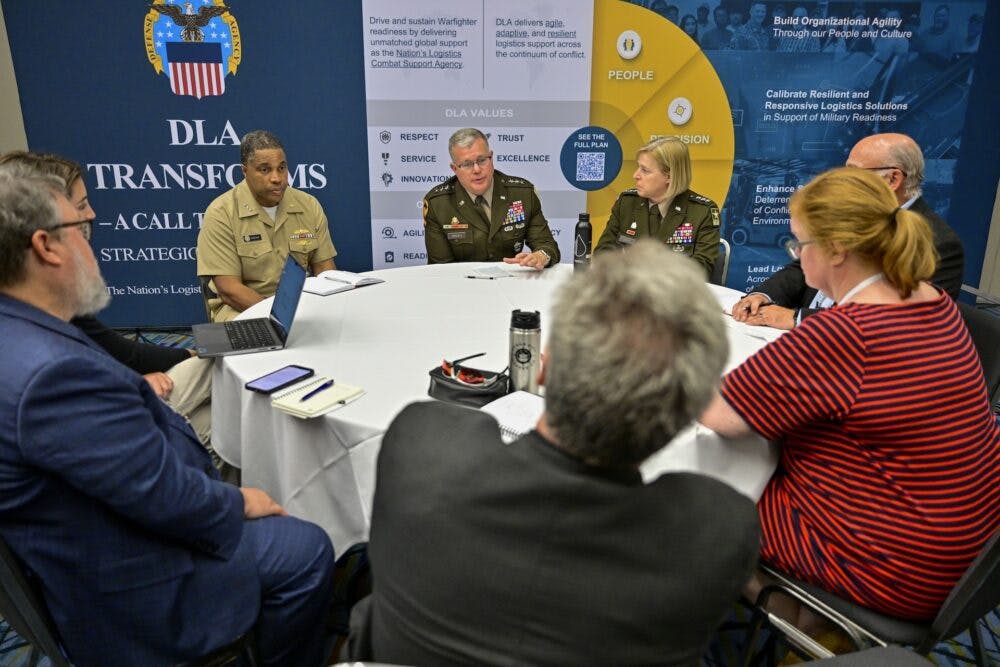Navy’s Military Sealift Command Upgrades IT to Ensure Health Care Continuity
The Navy’s Military Sealift Command is modernizing its IT infrastructure and consolidating data centers to improve health care and save costs.

The U.S. Navy’s Military Sealift Command (MSC) is overhauling its IT infrastructure to minimize system downtime, strengthen cybersecurity and streamline medical service delivery, Mike Taylor, hospital ship joint task director at the unit explained during Nutanix .NEXT in Washington, D.C. on Wednesday.
Adopting the Federal EHR
Taylor and his team are working to ensure the ship’s environment evolves at the pace with technology and mission requirements. As part of its effort to ensure health care continuity, United States Naval Ship Mercy, part of the command’s fleet, is adopting the single common federal electronic health record (EHR) — MHS Genesis — to streamline and modernize military care efforts.
Mercy has a dual role as a humanitarian and military ship, meaning security and IT updates must be done without disrupting operations. The command is using Nutanix’s non-disruptive upgrades (NDU) to aid non-database administrators (NDBA) in security efforts. Taylor said NDBAs can easily manage the entire data environment and push updates when needed.
“We have to keep the hospital running at all times. Service members’ lives will probably depend on it. If we’re on a humanitarian mission, the people that we’re taking care of are going to depend on those services as well,” said Taylor. “NDBAs still have to manage the overall environments and keep tabs on how we’re protecting data … we’re still protecting all of our things with that nice, tightly integrated HYCU mechanics environment,” said Taylor.
Migrating to a Hyper-converged Infrastructure
USNS Mercy has also transitioned to a hyper-converged infrastructure (HCI), which has enabled the service to save time, money and space by combining the elements of a traditional data center. Taylor said the transition to HCI was a “no-brainer” for MSC. HCI helped condense USNS Mercy’s disparate systems into a single environment.
“Our equipment’s on a ship, and the ship will only generate so much electricity. By allowing the ship to recover so much electricity from all this equipment, we actually are helping to be good stewards of the finite resources we have,” said Taylor.
Taylor added that his team reduced the two racks of equipment to four nodes and saw significant improvements in data protection, encryption and handling.
Adding AI to the Equation
Taylor said USNS Mercy is looking for ways to use AI to enhance and automate decision-making in security measures, but the shift to integrate the tech requires a mindset shift to start to trust AI outcomes.
He said his team is studying AI applications in the security environment to identify proper uses of the tech, especially as the ship delivers critical care during times of crisis.
“Health care is a different story. That scares me a little bit with health care, I don’t want AI making decisions to shut off a network point, a port that goes to an IV infusion pump,” said Taylor. “We’re watching it carefully. We’re excited to implement some facets of AI, especially in the security arena, but we’re treading lightly at this point.”
This is a carousel with manually rotating slides. Use Next and Previous buttons to navigate or jump to a slide with the slide dots
-

CIA Adds Fourth Pillar to AI Strategy, CAIO Says
Lakshmi Raman says the new pillar marks a strategic shift toward embedding AI more deeply into the CIA’s day-to-day mission execution.
3m read -

FEHRM CTO Targets Two-Year Cloud Migration for Federal EHR
Lance Scott touts new EHR tech advancements, including cloud migration, expanded data exchange and AI integration to improve care delivery.
4m read -

AI Enables Coast Guard’s Workforce to Transform Operations
The Coast Guard’s Deputy CIO Brian Campo delves into the ways AI is pushing the service to rethink its core services, workforce and operations.
14m watch -

New Army Acquisition Plan Cites Autonomy, Predictive Analytics
Officials outline how the Army Transformation Initiative signals a broader shift toward efficiency with tech and acquisition reform.
4m read








